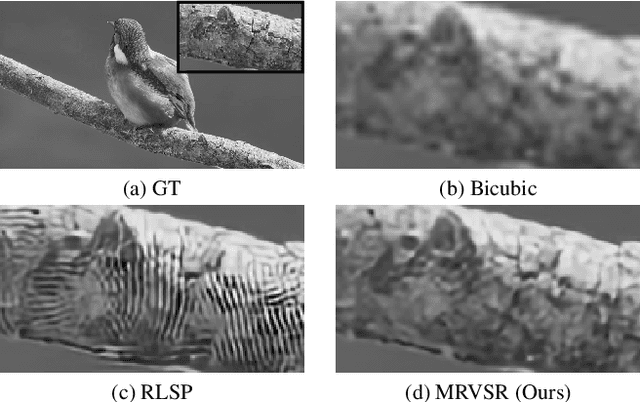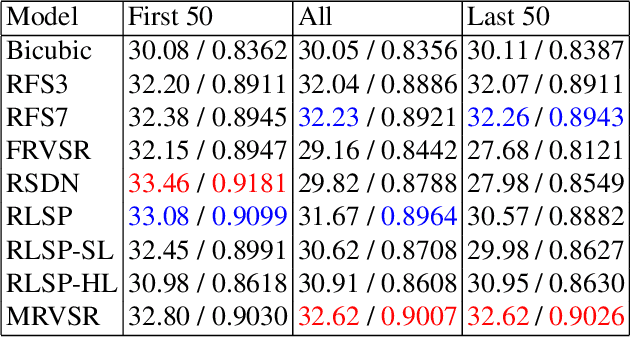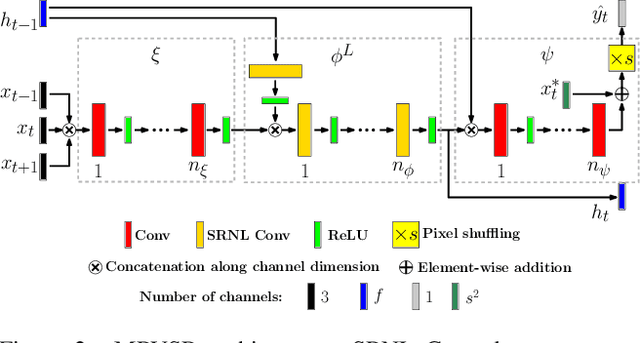Stable Long-Term Recurrent Video Super-Resolution
Paper and Code
Dec 16, 2021



Recurrent models have gained popularity in deep learning (DL) based video super-resolution (VSR), due to their increased computational efficiency, temporal receptive field and temporal consistency compared to sliding-window based models. However, when inferring on long video sequences presenting low motion (i.e. in which some parts of the scene barely move), recurrent models diverge through recurrent processing, generating high frequency artifacts. To the best of our knowledge, no study about VSR pointed out this instability problem, which can be critical for some real-world applications. Video surveillance is a typical example where such artifacts would occur, as both the camera and the scene stay static for a long time. In this work, we expose instabilities of existing recurrent VSR networks on long sequences with low motion. We demonstrate it on a new long sequence dataset Quasi-Static Video Set, that we have created. Finally, we introduce a new framework of recurrent VSR networks that is both stable and competitive, based on Lipschitz stability theory. We propose a new recurrent VSR network, coined Middle Recurrent Video Super-Resolution (MRVSR), based on this framework. We empirically show its competitive performance on long sequences with low motion.
 Add to Chrome
Add to Chrome Add to Firefox
Add to Firefox Add to Edge
Add to Edge